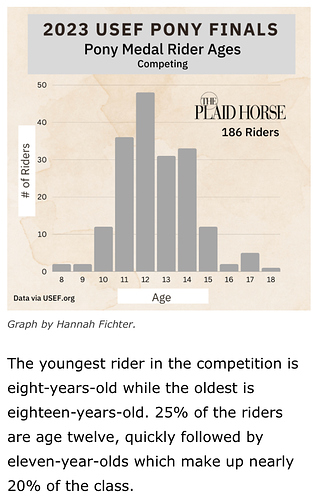Hi eq experts! I was watching the pony medal class at Pony Finals and had a few questions on some of the elements on the course.
- Halting between jumps: Most of the riders were halting after the jump - keeping a straight line after the jump and halting at the wall (fence at the end of the arena, after that jump). A few of them turned, then halted. The commentator noted several times “I would have liked for her to have used the wall more to get the halt”. I was marked down in a medal once, a million years ago, for using the fence to get my horse to halt. Which is more correct - use the fence, or take more time, make the turn, and then halt?
- After the halt, the next jump was a trot fence. Some riders picked up the canter after the halt, and then transitioned to the trot. Others picked up the trot after the halt and continued to the jump. Which is more correct?
I’ll agree with other posters on another thread: that was a challenging course. Congratulations to all of the pony medal competitors - hats off to you for making it around that tough track!

